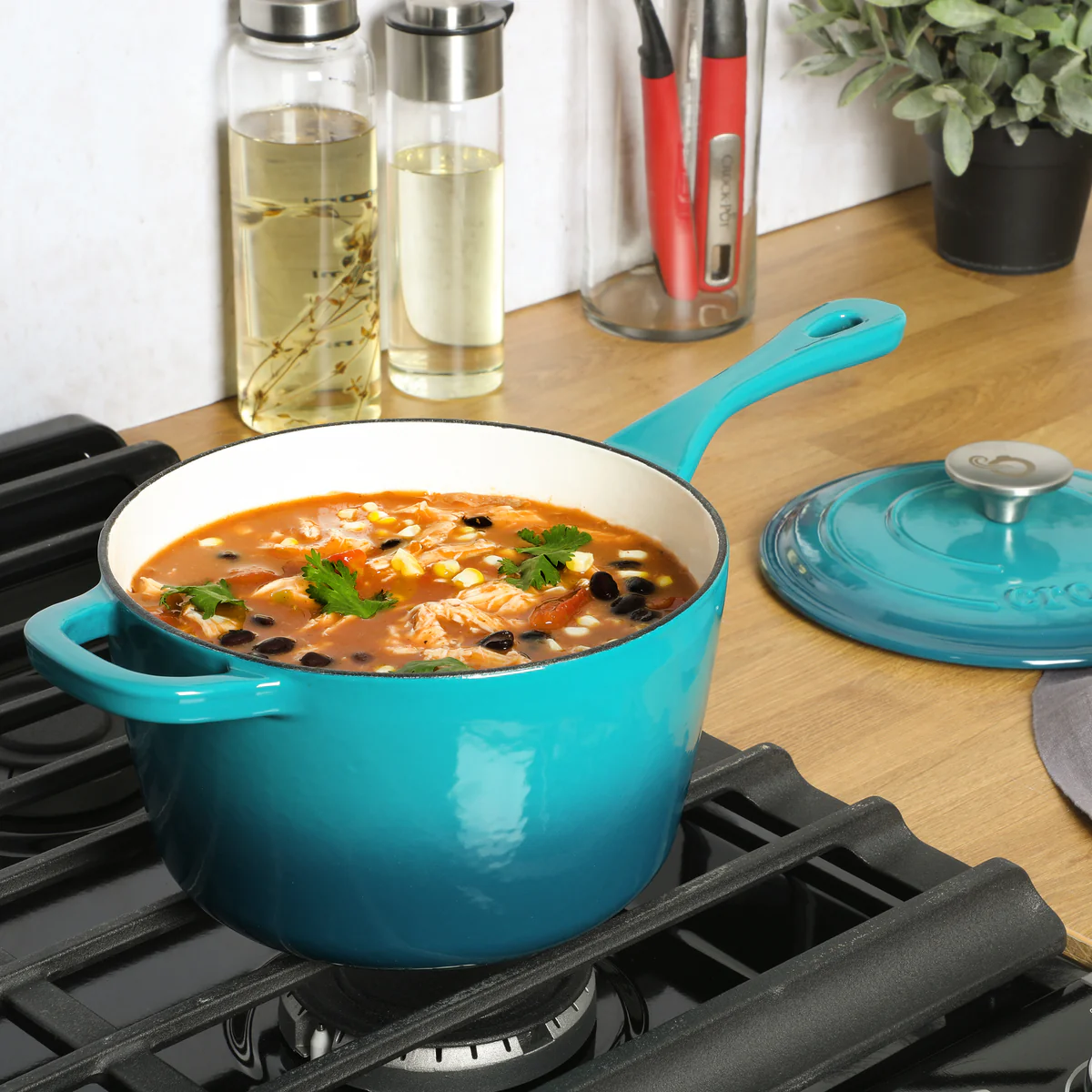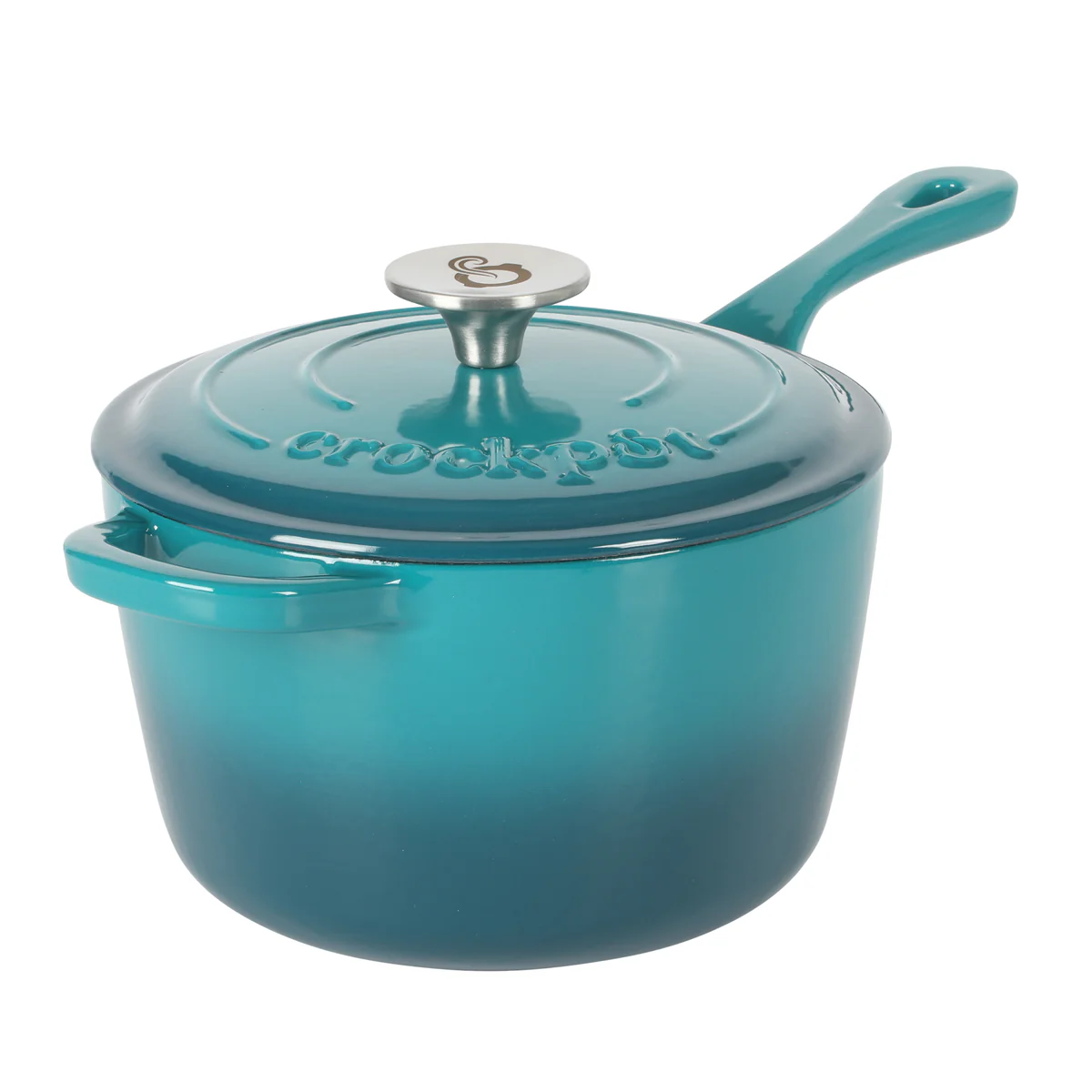Welcome, fellow Crock Potz enthusiast! There’s nothing quite like the magic of a slow cooker. The “set it and forget it” promise that delivers a soul-warming, delicious meal after a long day is a true kitchen game-changer. But as much as we love this appliance for its versatility, it isn’t a miracle worker for everything. If you’re wondering What Can You Not Cook In A Slow Cooker, you’ve come to the right place. I’ve learned through years of delicious successes—and a few memorable fails—that some ingredients just don’t play well with low, slow, moist heat.
Think of your slow cooker as a marathon runner, not a sprinter. It excels at breaking down tough cuts of meat and melding flavors over hours. But that same gentle, prolonged cooking can turn delicate ingredients into a mushy, unappetizing mess. Understanding this core principle is the key to mastering your Crockpot. Let’s dive into the foods you should avoid, why they fail, and what to do instead to guarantee a perfect one-pot meal every time.
Why Some Foods Fail in a Slow Cooker
The secret to a slow cooker’s success is its combination of three things: a sealed environment, low temperature, and long cooking times. This is perfect for transforming tough, sinewy cuts of meat like brisket or pork shoulder into tender, fall-apart perfection. The sealed lid traps moisture, essentially braising the food in its own juices.
However, this same environment is the enemy of certain textures and compounds.
- Delicate Textures: Foods that cook quickly, like flaky fish or quick-cooking vegetables, will disintegrate over several hours.
- Dairy: The proteins in milk, cream, and cheese can separate and curdle under prolonged, low heat.
- Crispiness: The high-moisture, sealed environment is designed for braising, not browning or crisping. Anything you want to have a crispy skin or a crunchy texture will come out soggy.
Knowing this foundation will help you troubleshoot any slow cooker recipe and make smart substitutions.
What Can You Not Cook in a Slow Cooker: The Definitive List
Here’s a breakdown of the top offenders. I’ll not only tell you what to avoid but also give you the pro tips to work around these limitations, because here at Crock Potz, we’re all about solutions!
1. Dairy Products (Milk, Cream, Cheese, Sour Cream)
This is probably the number one mistake I see new slow cooker users make. Adding dairy at the beginning of an 8-hour cook is a recipe for disaster. The prolonged, gentle heat causes dairy proteins to clump together and separate, resulting in a grainy, curdled texture. I once tried to make a creamy tomato soup from scratch in the Crockpot and came home to a separated, unappetizing mess.
- The Fix: Add your dairy ingredients during the last 15-30 minutes of cooking. Turn the heat up to “High” (if it was on “Low”) and stir in the milk, cream cheese, sour cream, or shredded cheese until it’s just melted and incorporated. This is the perfect technique for our Creamy Crockpot Chicken and Noodles.
2. Lean, Delicate Meats (Boneless, Skinless Chicken Breasts & Fish)
While a slow cooker is a champ with tough meats, it can easily overcook lean proteins. Boneless, skinless chicken breasts can become dry, chalky, and stringy after too many hours. Delicate fish fillets like cod, tilapia, or salmon will simply fall apart and turn to mush.
- The Fix for Chicken Breasts: Cook them on “Low” for a much shorter time, typically 2.5-3.5 hours. Always use a meat thermometer to ensure they reach an internal temperature of 165°F (74°C). Or, better yet, opt for chicken thighs, which have more fat and stand up beautifully to long cooking times.
- The Fix for Fish: Add fish fillets on top of your other ingredients for the final 20-40 minutes of cooking, depending on their thickness. They will gently steam to perfection.
3. Most Pasta and Grains
Dumping dry pasta or rice into your slow cooker at the beginning with all the other liquids is a one-way ticket to a goopy, starchy mess. These ingredients absorb liquid very quickly and will overcook long before your meat is tender, releasing excessive starch that makes the whole dish gummy.
- The Fix: Cook your pasta or rice separately on the stovetop according to package directions and serve the slow-cooked sauce or stew over it. Alternatively, for a true one-pot meal, you can stir in quick-cooking pasta or instant rice during the last 20-30 minutes of cook time, adding a little extra hot broth if needed.
4. Delicate or Quick-Cooking Vegetables
Not all veggies are created equal in the Crockpot. Hearty root vegetables like potatoes, carrots, and onions are perfect because they can withstand hours of cooking. Delicate vegetables, however, are a different story.
- Veggies to Avoid at the Start: Zucchini, summer squash, bell peppers, peas, corn, spinach, and mushrooms.
- The Fix: Add these faster-cooking vegetables during the last 30-60 minutes. For leafy greens like spinach or kale, you only need to stir them in during the final 5-10 minutes; the residual heat will wilt them perfectly.
As our resident food expert Sarah Carter says, “The key to a perfect Crockpot meal is layering your ingredients correctly. Always place root vegetables at the bottom where the heat is most consistent, followed by the meat, and save the delicate items for the very end.”
5. Fresh Herbs
The bright, aromatic oils that make fresh herbs like basil, parsley, cilantro, and dill so wonderful are very volatile. When added at the beginning of a long cook, their fresh flavor completely disappears, leaving behind a dull, sometimes bitter taste.
- The Fix: Use dried herbs (which are more potent and stand up to heat) at the beginning of the recipe for a foundational flavor. Then, stir in a generous amount of fresh, chopped herbs right before serving. This gives you the best of both worlds: a deep, slow-cooked flavor base and a bright, fresh finish.
6. Too Much Liquid
A common mistake is treating a slow cooker recipe like a stovetop one. On the stove, liquid evaporates and reduces, concentrating flavors. In a sealed slow cooker, very little liquid evaporates. Adding too much at the start will leave you with a bland, watery sauce.
- The Fix: Use about half the liquid you would for a traditional recipe. The ingredients, especially meat and vegetables, will release a significant amount of their own juices during cooking. You can always add more liquid later, but it’s much harder to fix a watery dish. If your final dish is too thin, you can create a cornstarch slurry (equal parts cornstarch and cold water) and stir it in on “High” for the last 15 minutes to thicken the sauce.
7. Uncooked Dried Beans
This one is a critical food safety issue. Never cook raw, dried kidney beans, cannellini beans, or red beans in a slow cooker from scratch. They contain a toxin called phytohaemagglutinin, which must be destroyed by boiling at a high temperature. A slow cooker’s “Low” setting often doesn’t get hot enough to neutralize this toxin, which can cause severe food poisoning.
- The Fix: Either use canned beans (which are already cooked) or pre-boil your dried beans on the stovetop for at least 10 minutes before adding them to the slow cooker to finish cooking until tender.
8. Crispy-Skinned Anything
If you’re dreaming of crispy-skinned roast chicken or crackling pork, the slow cooker is not your tool. The moist, steamy environment will give you very tender meat, but the skin will be pale, soft, and rubbery.
- The Fix: For the best of both worlds, use the slow cooker to get the meat perfectly tender, then transfer it to a baking sheet and pop it under the broiler in your oven for 3-5 minutes to crisp up the skin beautifully before serving.
9. Alcohol That Isn’t Pre-Cooked
When you deglaze a pan with wine on the stovetop, the high heat and evaporation cook off most of the harsh alcohol flavor, leaving behind a rich complexity. In a sealed slow cooker, the alcohol doesn’t evaporate, and you can be left with a raw, boozy taste in your final dish.
- The Fix: If a recipe calls for wine or beer, simmer it in a pan on the stove for a few minutes to reduce it slightly and cook off the raw alcohol taste before adding it to the Crockpot.
10. Seafood Like Shrimp and Scallops
Much like delicate fish, shrimp and scallops cook in a matter of minutes. If you add them at the start of a multi-hour recipe, they will become tough, rubbery, and completely unpalatable.
- The Fix: Stir in raw shrimp or scallops during the final 10-15 minutes of cooking. They will cook through perfectly in the hot liquid without overcooking.
11. An Entire, Uncut Roast
While the slow cooker excels at large cuts of meat, throwing in a massive, solid roast without cutting it can lead to uneven cooking. The outside can overcook before the center has reached a safe temperature.
- The Fix: For very large roasts (over 5-6 lbs), it’s often best to cut them into a few large, more manageable chunks. This exposes more surface area to the heat, ensuring everything cooks evenly and becomes tender throughout.
Frequently Asked Questions (FAQ)
Here are some quick answers to the most common questions we get at Crock Potz.
Can you put raw chicken in a slow cooker?
Absolutely! It’s one of the best ways to cook it. Just ensure the chicken reaches a safe internal temperature of 165°F (74°C). For best results with chicken breasts, stick to shorter cooking times (2.5-4 hours on Low) to prevent them from drying out.
How do I stop my slow cooker meals from being watery?
Start with less liquid than you think you need—often just a half to one cup of broth is plenty. Remember that meat and vegetables will release their own juices. If it’s still watery at the end, remove the lid, turn the heat to “High” for the last 30 minutes, or thicken with a cornstarch slurry.
Do I really need to brown meat before slow cooking?
You don’t have to for the meal to be cooked, but you should for the best flavor. Browning meat in a hot skillet before adding it to the Crockpot creates a deep, savory, caramelized flavor through the Maillard reaction that you simply cannot achieve in the slow cooker itself. It’s an extra step, but it’s worth it.
Will vegetables get mushy in a Crockpot?
They can if you’re not careful. Hearty root vegetables like carrots, potatoes, and parsnips should go in at the beginning. More delicate vegetables like bell peppers, zucchini, and peas should be added during the last 30-60 minutes of cooking to maintain some texture.
What is the difference between cooking on Low vs. High?
The main difference is the time it takes to reach the simmer point (around 209°F or 98°C). Both settings cook the food at the same final temperature. As a general rule, one hour of cooking on “High” is equivalent to about two hours on “Low”.
Your Crockpot Journey
Mastering your slow cooker is all about understanding its strengths and weaknesses. By knowing what can you not cook in a slow cooker, you’re well on your way to avoiding common pitfalls and creating consistently delicious meals. Don’t be afraid to experiment! This appliance is your best friend for busy weeknights and cozy weekends.
Now that you know the rules, you can confidently break them (the right way!). Go ahead, try that creamy pasta dish by adding the dairy and noodles at the end. Make that “roast” chicken and crisp the skin under the broiler. We’d love to hear about your slow cooker adventures in the comments below! What was your biggest Crockpot fail, and what did you learn from it?
